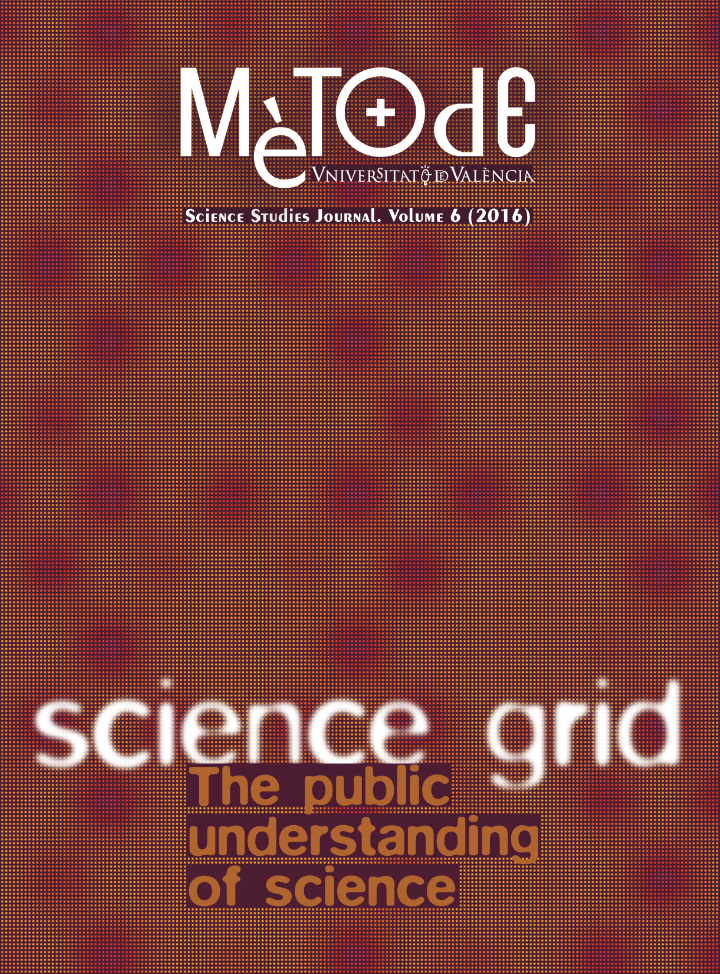A vindication of ethnobotany: Between natural and social science
DOI:
https://doi.org/10.7203/metode.6.4402Keywords:
ethnobiology, ethnobotany, citizen science, natural science, social science, multidisciplinarity Abstract
Abstract
Ethnobotany, a discipline located at the intersection between natural science and social science, is sometimes misunderstood by researchers from one or other of these fields. In this article we discuss the positive and negative aspects of interdisciplinarity regarding this subject, and we argue for its status as a true science from different points of view. Our conclusion is that ethnobotanical research – like all ethnobiological research in general – undoubtedly exists within the scientific field and is successfully established, active and productive. In addition, ethnobotany is a citizen science: the participation of the population is essential for research, which must be communicated to academia and to the general citizen.
 Downloads
Downloads
 References
References
Barrau, J. (1971). L’ethnobotanique au carrefour des sciences naturelles et des sciences humaines. Bulletin de la Société Botanique de France, 118, 237–248. doi: 10.1080/00378941.1971.10838893
Bennett, B. C. (2005). Ethnobotany education, opportunities and needs in the U.S. Ethnobotany Research & Applications, 3, 113–121.
Berlin, B. (1992). Ethnobiological classification: Principles of categorization of plants and animals in traditional societies. Princeton: Princeton University Press.
Bonney, R., Cooper, C. B., Dickinson, J., Kelling, S., Phillips, T., Rosenberg, K. V., & Shirk, J. (2009). Citizen science: A developing tool for expanding science knowledge and scientific literacy. BioScience, 59, 977–984. doi: 10.1525/bio.2009.59.11.9
Camarasa, J. M. (1984). Pius Font i Quer: Un precursor de l’etnobotànica farmacèutica a Catalunya. Arxiu d’Etnografia de Catalunya, 3, 175–186.
Font i Quer, P. (1916). La ciència d’en Sovatger. Butlletí del Centre Excursionista de la Comarca del Bages, 66, 142–145.
Hand, E. (2010). Citizen science: People power. Nature, 466, 685–687. doi: 10.1038/466685a
Harshberger, J. W. (1896). Purposes of ethnobotany. Botanical Gazette, 21, 146–154.
Heinrich, M. (2000). Ethnobotany and its role in drug development. Phyto-therapy Research, 14, 479–488. doi: 10.1002/1099-1573(200011)14:7<479::aid-ptr958>3.0.co;2-2
Irwin, A. (1995). Citizen science: A study of people, expertise and sustainable development. London: Routledge.
Lévi-Strauss, C. (1962). La pensée sauvage. Paris: Plon. Palacín, J. M. (1994). La “medicina popular”: Fuentes para su estudio y método de trabajo. Metodología de la Investigación Científica Sobre Fuentes Aragonesas, 9, 359–419.
Pardo de Santayana, M. (2014). Etnobotánica e inventario español de conocimientos tradicionales. Conservación Vegetal, 18, 1–4.
Pardo de Santayana, M., Pieroni, A., & Puri, R. (Eds.) (2010). Ethnobotany in the new Europe. People, health and wild plant resources. New York-Oxford: Berghahn Books.
Portères, R. (1970). Cours d’ethno-botanique et ethno-zoologie (1969-1970). Volume I. Paris: Muséum National d’Histoire Naturelle.
Saslis-Lagoudakis, C. H., Klitgaard, B. B., Forest, F., Francis, L., Savolainen, V., Williamson, E. M., & Hawkins, J. A. (2011). The use of phylogeny to interpret cross-cultural patterns in plant use and guide medicinal plant discovery: An example from Pterocarpus (Leguminosae). PLoS ONE, 6(7), e22275. doi: 10.1371/journal.pone.0022275
Schultes, R. E., & von Reis, S. (Eds.). (1995). Ethnobotany: Evolution of a discipline. London: Chapman and Hall.
Snow, C. P. (1965). Les dues cultures i la revolució científica. Barcelona: Edicions 62.
Trotter, R. T., & Logan, M. H. (1986). Informant consensus: A new approach for identifying potentially effective medicinal plants. In N. L. Etkin (Ed.), Plants in indigenous medicine and diet, behavioural approaches. New York: Redgrave Publishing Company.
Downloads
Published
How to Cite
-
Abstract1693
-
PDF465
Issue
Section
License
![]()
All the documents in the OJS platform are open access and property of their respective authors.
Authors publishing in the journal agree to the following terms:
- Authors keep the rights and guarantee Metode Science Studies Journal the right to be the first publication of the document, licensed under a Creative Commons Attribution-NonCommercial-NoDerivatives 4.0 International License that allows others to share the work with an acknowledgement of authorship and publication in the journal.
- Authors are allowed and encouraged to spread their work through electronic means using personal or institutional websites (institutional open archives, personal websites or professional and academic networks profiles) once the text has been published.





